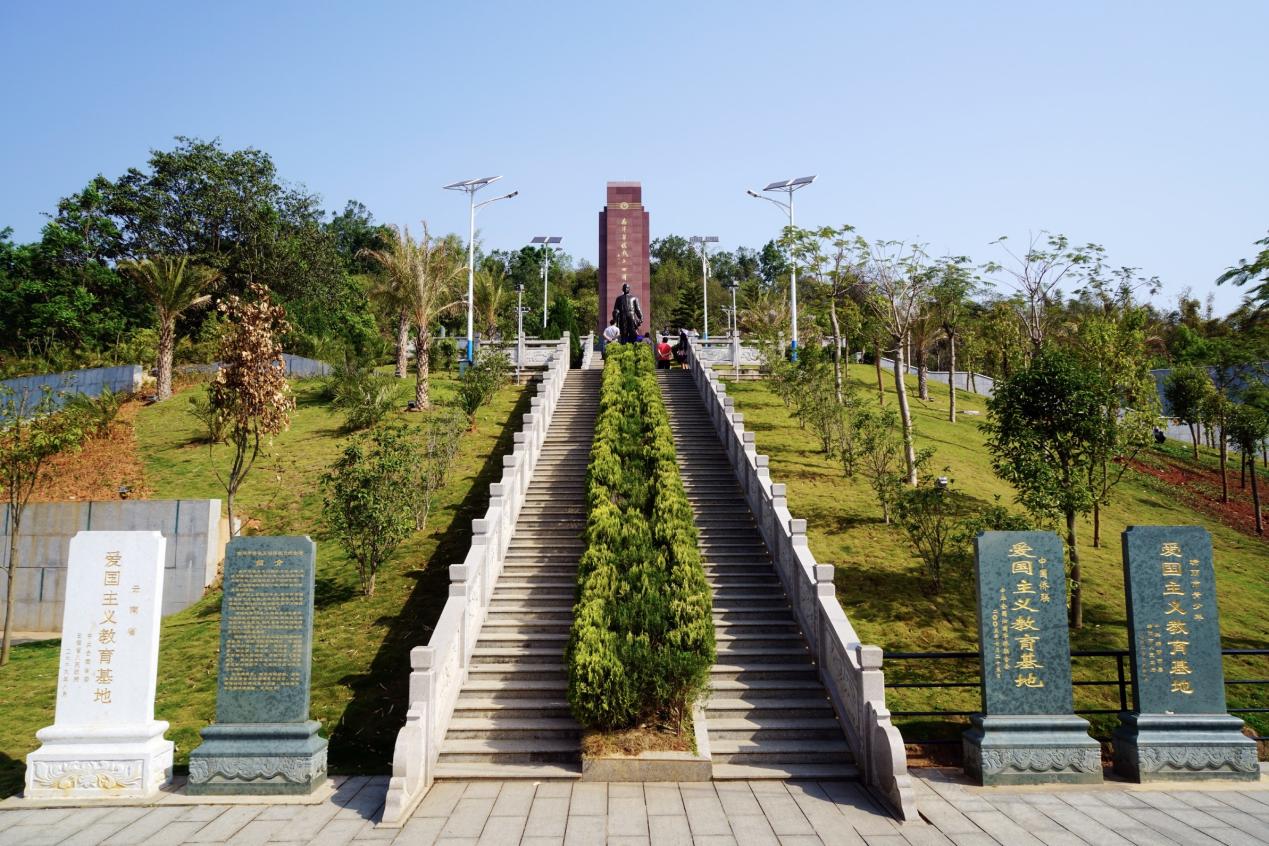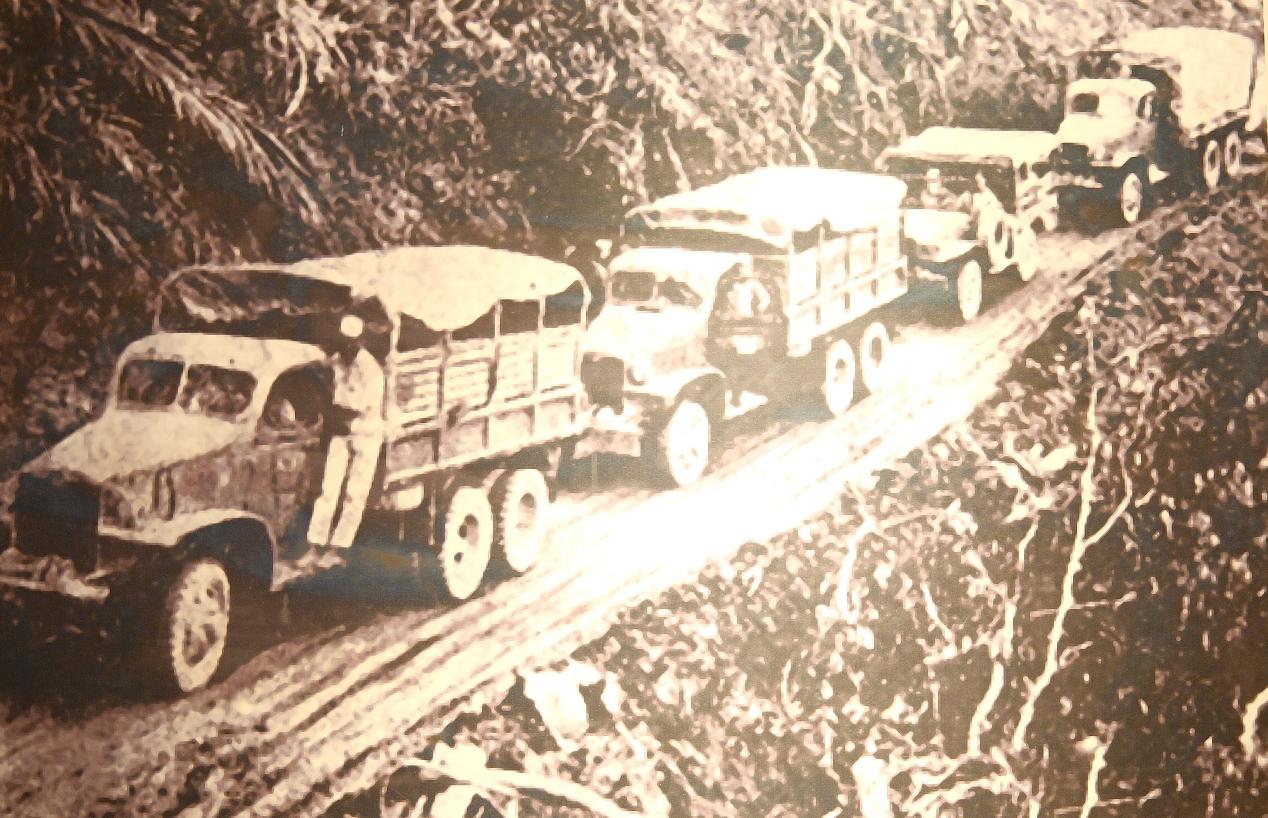




- BRNN
- BRI News
- BRNN News
- Database
Official Documents Polices and Regulations
Inter-government Documents International Cooperation BRI Countries
Business Guide Economic Data BRI Data
Trade
Investment Projects Latest projects
Cases - Content Pool

Photo shows a monument commemorating the Nanyang Volunteer Drivers and Mechanics in Dehong, southwest China's Yunnan province. (Photo courtesy of the media center of Ruili, Yunnan province)
High on the Western Hills of Kunming, southwest China's Yunnan province, stands a nine-meter monument engraved with four solemn Chinese characters: "Chi Zi Gong Xun," a tribute to the patriotic service of those who gave all.
This memorial honors an extraordinary chapter from Chinese People's War of Resistance Against Japanese Aggression: more than 3,000 passionate overseas Chinese from Southeast Asia volunteered to return to their ancestral homeland, serving as drivers and mechanics. Their sacrifice became a powerful symbol of the overseas Chinese community's patriotism and contributed decisively to both China's wartime resistance and the global fight against fascism.
When Japan launched its full-scale invasion of China on July 7, 1937, China's coastal ports fell under Japanese control. With critical supply lines severed - first the Northwest Highway, then the Yunnan-Vietnam Railway, the Burma Road became an important transport route connecting China and the outside world.
Stretching 1,146 kilometers from Kunming to Myanmar, this strategic artery crossed the formidable Gaoligong and Yunling Mountain ranges. Carved out almost entirely by hand through rugged terrain by some 200,000 laborers in just nine months, it opened in August 1938 and quickly became known as "the lifeline of the Chinese people's resistance against Japanese aggression."
Yet even with the road in place, a critical shortage of trained drivers and mechanics threatened the flow of supplies. Between 1939 and 1942, over 3,200 Chinese from Singapore, Malaysia, Indonesia, Myanmar, Vietnam, and Thailand returned to serve as volunteer mechanics and drivers. Recruited in nine batches, these individuals - including at least five women - exchanged safety for the uncertainty of war. They transported military supplies and repaired trucks, forming an "unsinkable supply line" that helped sustain China's resistance.

Nanyang Volunteer Drivers and Mechanics drive on the Burma Road. (Photo courtesy of the Nanyang Volunteer Drivers and Mechanics Memorial Hall)
In July 1939, 21-year-old Luo Kaihu was one of more than 300 young men who joined the eighth batch of volunteers. "When I left Southeast Asia for Yunnan, I was fully prepared to die. I didn't expect to come back alive," Luo recalled in a 2018 interview with People's Daily. Nearly a century old at the time of the interview, Luo remained in good health and still enjoyed his old habits - reading the newspaper and sipping coffee, just as he had in Southeast Asia decades earlier.
Every journey on the Burma Road was perilous. Trucks navigated along treacherous cliffside paths, where a single miscalculation could send them plummeting into ravines. Co-drivers often clung to the outside of vehicles, visually guiding the trucks. Swarms of mosquitoes and widespread malaria took a heavy toll, and many volunteers died en route. Air raids by Japanese aircraft were frequent, and when trucks were hit, the drivers had little chance of survival.
"Malaria, constant shelling - I lost so many of my comrades," Luo said, his calm voice tinged with an enduring pain.
Though records remain incomplete, estimates suggest that more than a third of the 3,200 volunteers died along the route. On average, one volunteer per kilometer gave their life to keep the supply line open.
In 2018, the Archives of Nanyang Volunteer Drivers and Mechanics were inscribed in the Asia Pacific regional register of UNESCO's Memory of the World Programme. These records faithfully document the experiences of the overseas Chinese who voluntarily returned to China to aid the war effort. Their stories now preserve the collective memory of the overseas Chinese community's fight against tyranny and commitment to peace. In 2019, the Malaysian World War II History Society awarded the volunteers the Asian peace prize, an honor recognizing wartime service.
During his state visit to Malaysia in April this year, Chinese President Xi Jinping paid tribute to this legacy in a signed article published in Malaysian media outlets. He said, "Some 80 years ago, when the Chinese People's War of Resistance Against Japanese Aggression reached a critical juncture, the Nanyang Volunteer Drivers and Mechanics from Malaysia braved immense dangers to reach China's Yunnan province, and helped keep the Burma Road operational, as it was a vital lifeline of China's wartime supplies. Today, this remarkable story of courage still echoes in the hearts of both peoples."
Reflecting on his decision to serve, Luo once said, "When the country is in peril, every Chinese has a duty to step forward, no matter the cost."
"The Nanyang volunteers chose danger over comfort," said historian Xia Yuqing. "Their decision was born of an unshakable bond with the Chinese nation. Their courage was a living bulwark in China's fight for independence, and a lasting monument to the contributions of overseas Chinese to world peace."
In a war fought not only for national independence but for the future of humanity, the Nanyang Volunteer Drivers and Mechanics secured their place in history. Their sacrifices are recorded not only in China's resistance annals but in humanity's shared memory of opposing fascism.
"Today, as the world faces fresh uncertainty, remembering the Nanyang Volunteer Drivers and Mechanics is about more than honoring history. It's about drawing strength from their legacy. Their unwavering conviction, across decades and continents, reminds us that peace must be defended and the future must be built together," Xia added.

Tel:86-10-65363107, 86-10-65368220, 86-10-65363106